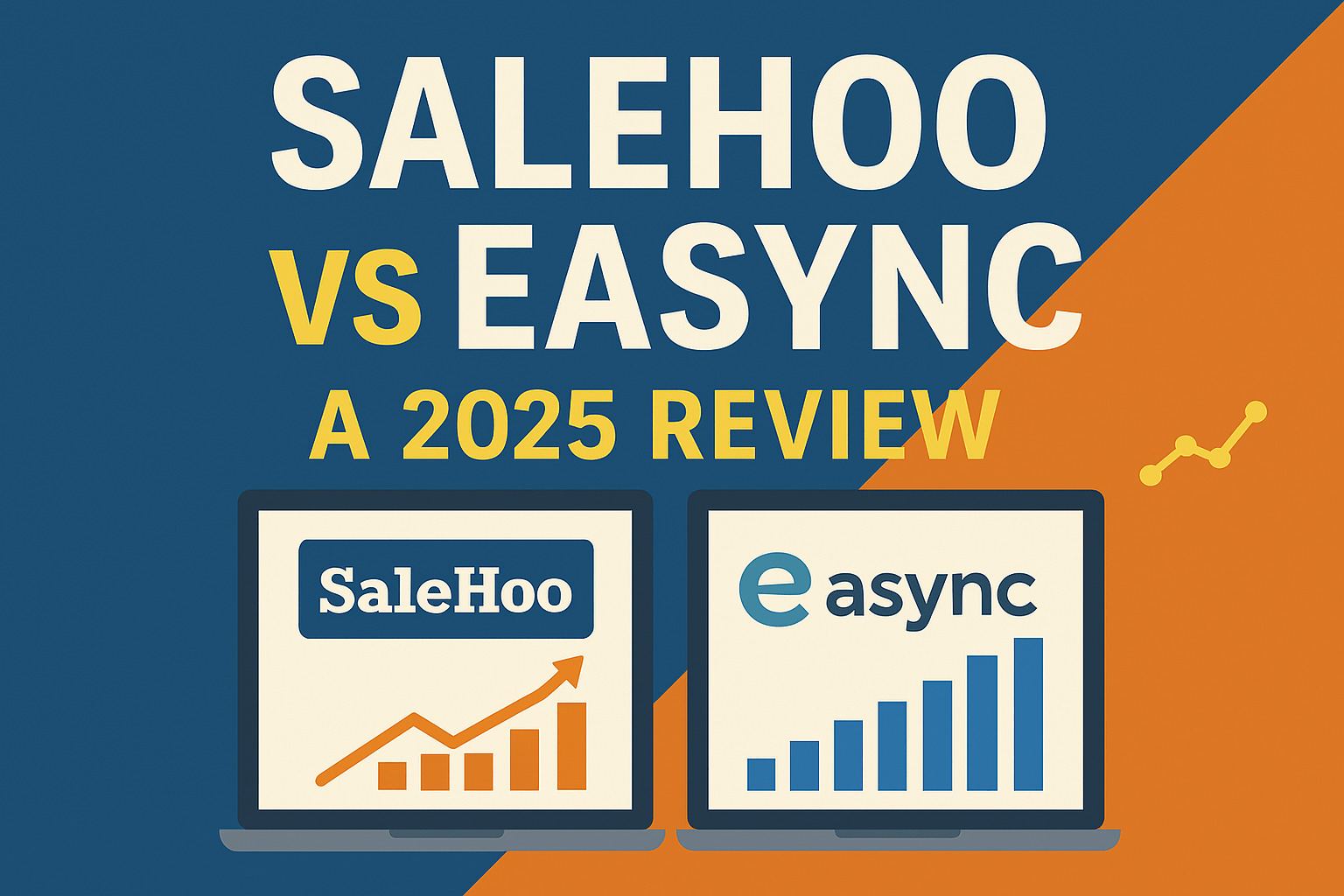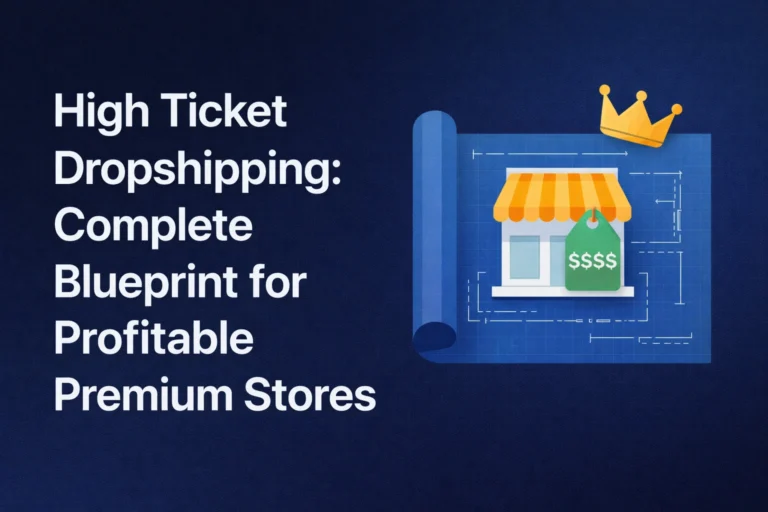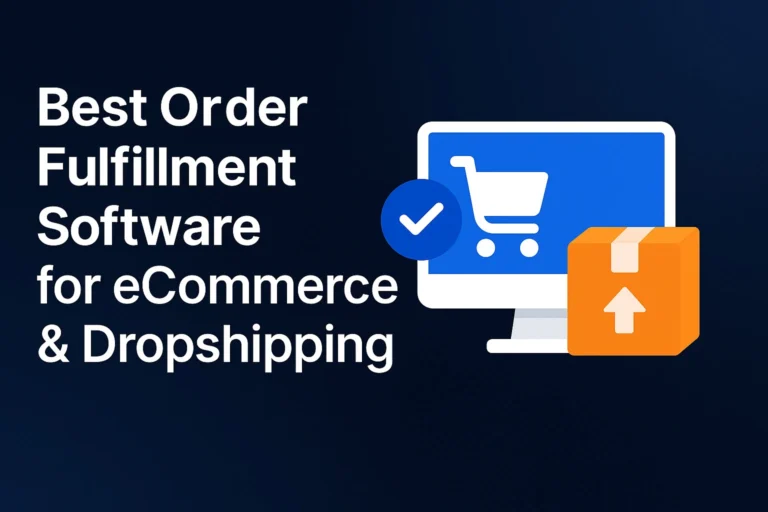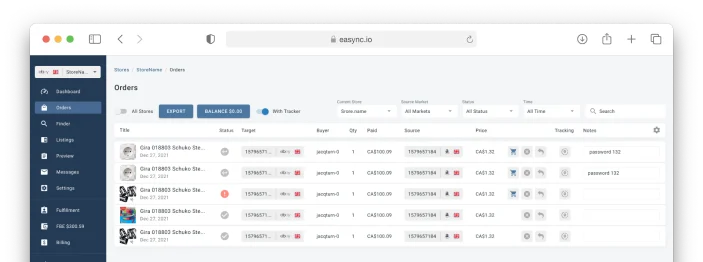Dropshipping is far from a new concept. Long before online stores and one-click checkouts, businesses already used mail-order catalogs to sell products they didn’t physically stock. However, in the age of eCommerce, platforms like SaleHoo helped bring that concept into the digital age.
Founded in 2005, SaleHoo was one of the first tools built to connect online sellers with wholesale suppliers. It promised a simpler way to find vendors worth dealing with, research products, and build up a business without as much risk. To its credit, SaleHoo did this well, but that was a different time.
Fast forward to 2025, and the whole dropshipping world has taken on a life of its own. Many sellers who started with SaleHoo now demand faster tools with automation and direct support for popular marketplaces.
So, today, the question isn’t whether SaleHoo performs but if it still makes sense to use for a growing business.
In this review, we’ll be taking a detailed look at how SaleHoo performs today, and why some sellers are looking at SaleHoo alternatives.
What Is SaleHoo and Is It Legit?
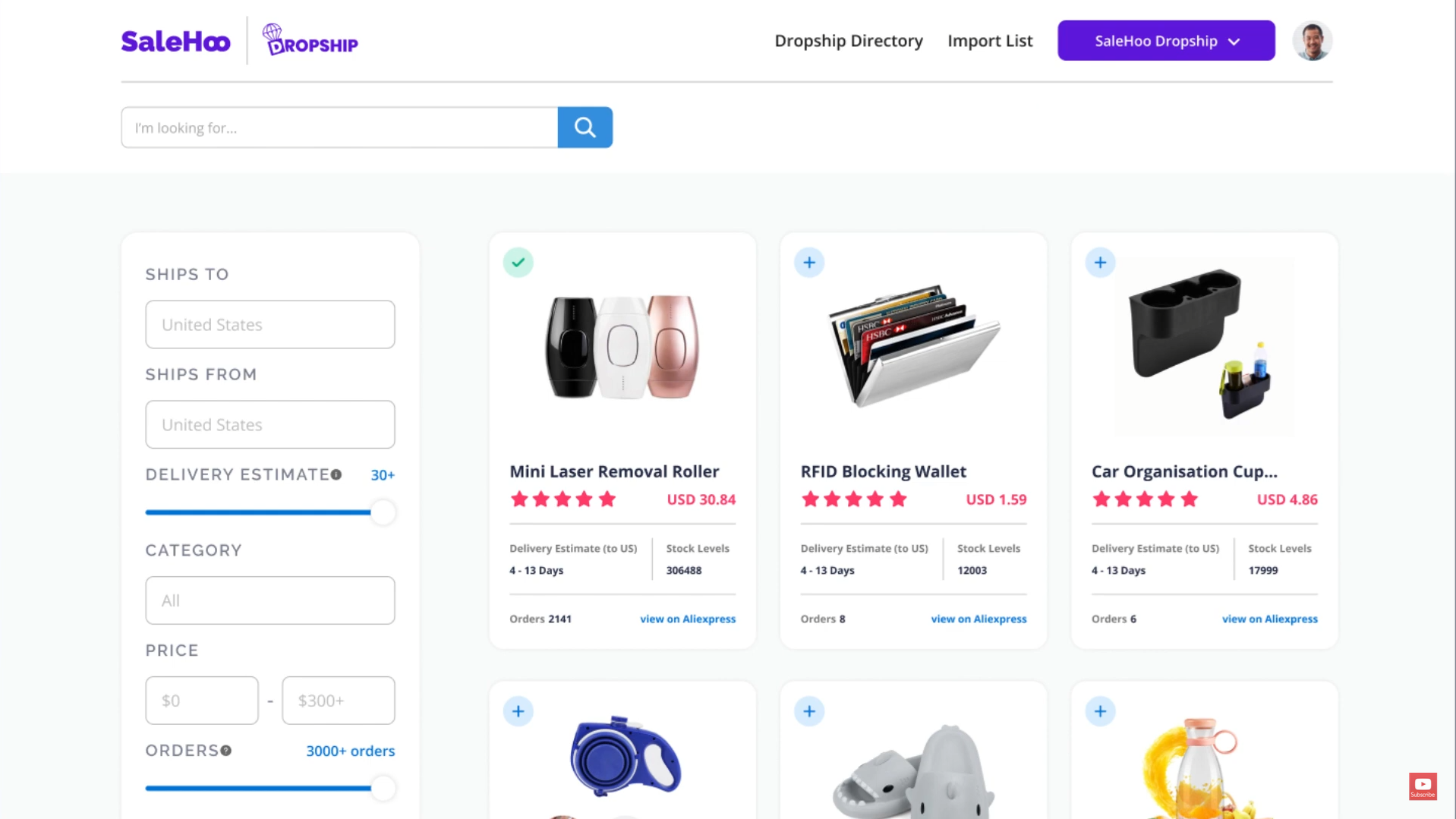
Have a look at SaleHoo and you might get the idea it’s another all-in-one tool for dropshippers. While it does initially give that impression and does offer several different roles under one roof, it’s more of a one-part supplier directory, one-part product research engine. Much of its functionality depends on which pricing model you end up choosing.
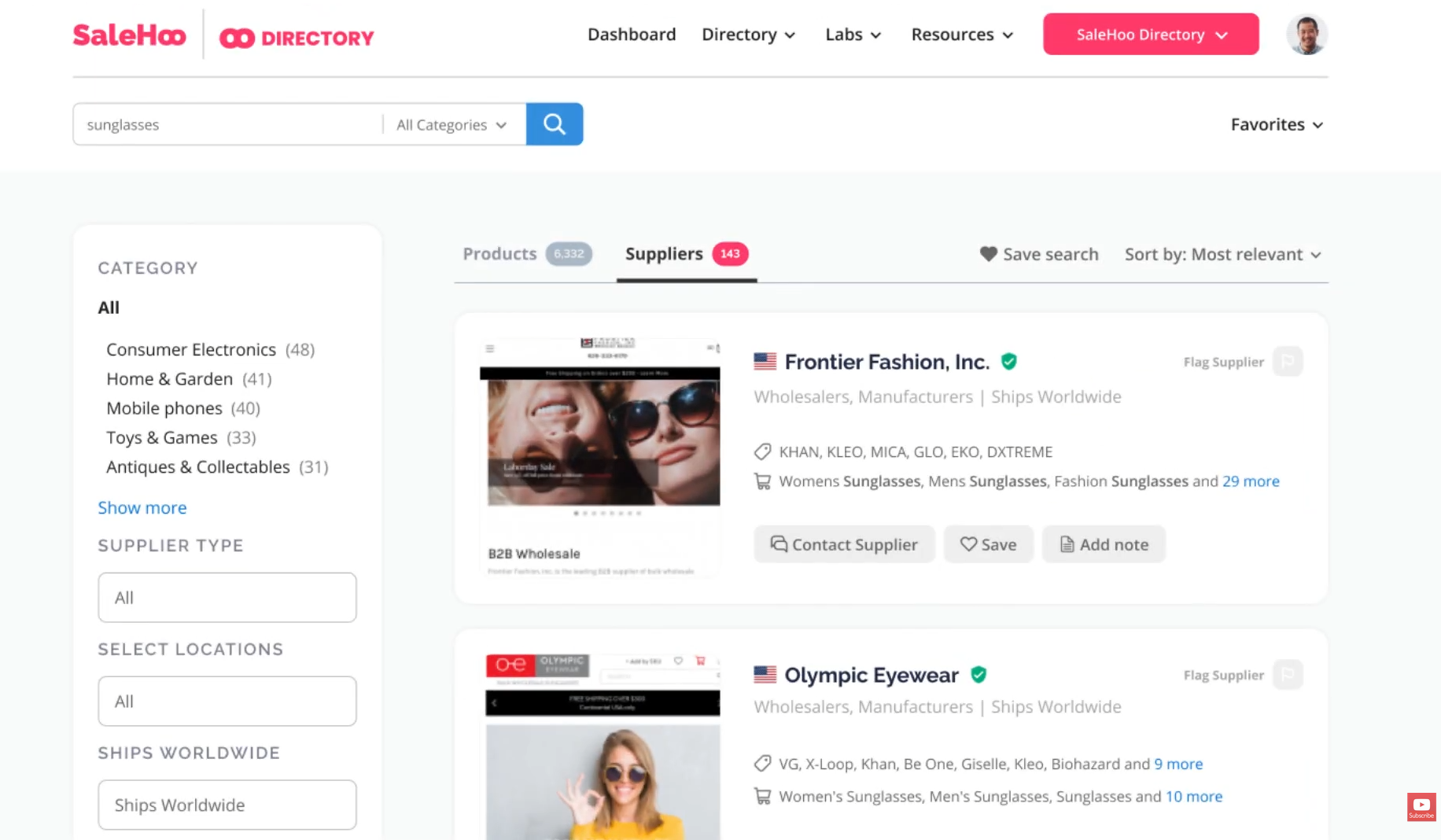
The SaleHoo directory is the oldest and most well-known part of the platform. It gives sellers access to over 8000 pre-vetted suppliers from around the world, including the U.S., China, Australia, and parts of Europe. You can browse suppliers by niche, see what they have in stock, and get their contact details.
Why would you need these details? Well, with SaleHoo, you need to handle a lot of logistics yourself, including setting up fulfillment and negotiating the shipping process.
The SaleHoo dropshipping component adds a more modern layer. This one connects to Shopify and allows sellers to import products directly into their stores. It simplifies product research and management, but you’re still limited to single sales channels.

The Market Research Lab is an included tool designed to help sellers find high-demand, low-competition products. It can be used to filter by sales, competition, and price, though it’s less advanced than other dedicated tools in this space.
If you’re wondering where you can actually sell using SaleHoo, here are the main marketplaces supported across all of its tools:
- Shopify (via SaleHoo Dropship)
- Amazing (requires independent supplier integrations)
- eBay (manual listings)
- WooCommerce and others (no direct integration, but with supplier negotiation)
How the SaleHoo System Works From the Inside
Getting started with SaleHoo dropshipping is quite straightforward. However, sellers can expect some differences compared to SaleHoo alternatives.
The signup process is handled through the ClickBank API, which also handles payment processing for SaleHoo plans. This means sellers who are outside of supported regions (essentially the U.S., Australia, and Europe) or using VPNs will have to end their journey right here. If access isn’t an issue, the rest of the process is simple: enter your full name (must match your credit card credentials – again, a ClickBank requirement), confirm your email, and then set a password.
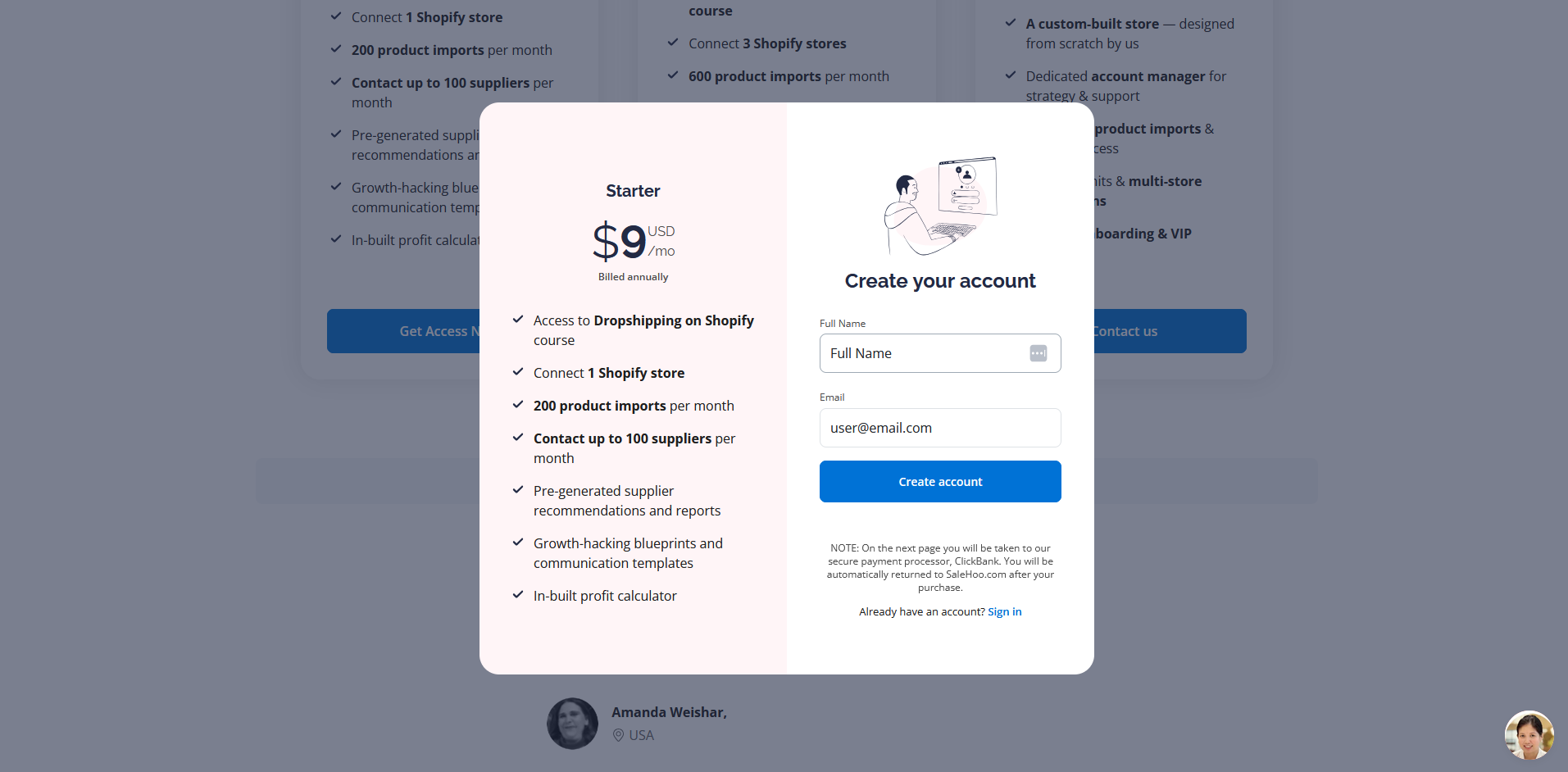
From there, you’re taken to the dashboard. Once inside, SaleHoo guides you through its main product offerings: Directory, Dropship, or Educate.
Selecting Directory will give you access to a searchable database of suppliers sorted by niche, product type, or location. Each listing will include business information, contact methods, and shipping coverage. You will need to contact suppliers directly to negotiate pricing, shipping options, and product availability.

If you choose SaleHoo Dropship, the workflow becomes more automated, but this is limited to sellers linking a Shopify store. After linking your store, you can then browse products (mostly from AliExpress) and source shipping details and product specs.
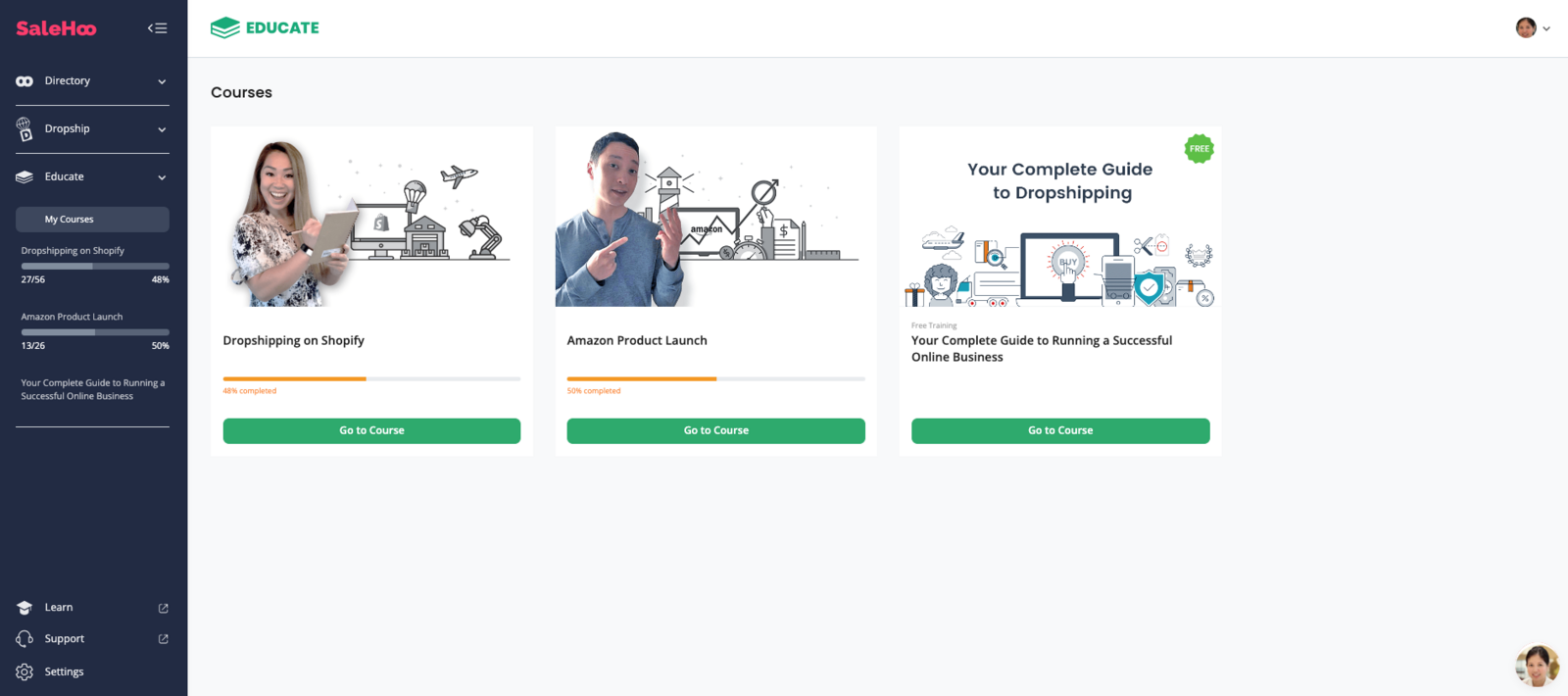
Choosing SaleHoo Educate gives you access to a wide range of material designed to help you learn about dropshipping in general or Amazon FBA. With SaleHoo Educate, you won’t receive access to the directory or research tools.
SaleHoo does a good job of covering the basics. However, some sellers will need more direct automation, especially across platforms like eBay and Amazon.
SaleHoo alternatives like Easync offer a deeper automation suite that works across multiple stores, which means dropshippers who are selling at scale need not worry about manually negotiating fulfillment.
What SaleHoo Gets Right (And Where It Gets in Its Own Way)
SaleHoo has its place in the dropshipping toolkit, especially for newer sellers. However, its advantages come with a few trade-offs worth considering.
SaleHoo Pros
SaleHoo is often used by new sellers looking for a platform to start out on. This is because it simplifies a lot of the legwork.
One of its biggest selling points is the vetted supplier network. With more than 8,000 listed companies across categories like health, electronics, and apparel, the platform filters out the obvious scams. Each listing includes everything sellers need to get started so they can get a solid picture before reaching out.
It’s also designed with beginners in mind. The dashboard is clean and approachable, with saved product lists and search filters built in that mimic those of most modern directory-type listings.
SaleHoo Cons
That said, all this simplicity comes at a cost:
- Order fulfillment is mostly manual. Unless you’re using their Shopify app, you’ll be left contacting suppliers yourself, managing order details, and tracking shipments by hand. It’s a lot for a newbie to wrap their head around.
- eBay and inventory updates aren’t in real time. This increases the chance that a seller might need to absorb the costs of incorrectly priced items or have an awkward conversation about out-of-stock items. Again, not ideal for new users.
- Support is ok but limited. There is no 24/7 support agent or onboarding help. We encountered this ourselves during an onboarding issue and found there was no one around to help. If you’re new to dropshipping, you want help around whenever you need it.
These gaps are exactly why many growing sellers start looking for SaleHoo alternatives like Easync. These alternatives offer automation, real-time syncing, and support for multiple marketplaces, including eBay, Amazon, Walmart, and Kmart.

Salehoo Reviews: What Do Real Users Think?

With thousands of users over nearly two decades, SaleHoo has built a name and reputation for itself. However, SaleHoo reviews on the platform are mixed, depending on who you ask and what users actually need from the platform.
On G2, TrustPilot, and Reddit, most reviews mention SaleHoo’s extensive directory of suppliers and helpful support team. For beginners taking their first steps into dropshipping, that can be enough to get moving in the right direction.
“Great company, customer service is awesome. Unfortunately, there are very few suppliers and dropshippers in Latin America, if they can work this out, it will be extremely helpful for latin american entrepreneurs.” – Trustpilot.
Beneath the surface, though, recurring themes start to show. One common complaint is the lack of uniqueness or variety in the product catalog:
“The products available for drop shipping are so generic and are so limited, it doesnt allow for anything unique to be built.” – G2.
Others point to the narrow marketplace support and limited features:
“SaleHoo offers limited features compared to some alternative platforms, such as advanced search tools and market analytics.” – Reddit.
The fact that the platform only properly integrates with Shopify tends to also catch users off guard. For sellers outside of North America or Europe, the regional gaps are also frustrating.
Overall, SaleHero gets praised for being accessible, but its usefulness drops off considerably once you move past the beginner phase.
What Do Users Think About Easync?

Compared to SaleHoo’s more limited model, Easync attracts serious sellers who are ready to automate and scale across multiple marketplaces. Reviews reflect that.
Even though it can be beginner-friendly, Easync doesn’t market itself as a beginner tool. It’s used by sellers with real order volumes and growing catalogs. This is why reviews tend to focus more on performance rather than hand-holding.
“Easync is one of the best tools out there for serious dropshippers. I’ve used it to scale my store efficiently while minimizing order issues. The value it brings easily outweighs the cost.” – Slashdot.
“Excellent design, stable performance, and dependable support—this company has nailed it. I highly recommend it to anyone looking for a reliable, hassle-free solution.” – G2.
Easync’s platform offers real-time syncing, automated order processing, and compatibility with all the major marketplaces, not just Shopify. Because of this, users often describe it as a powerhouse with a clean interface and easier use than alternatives like AutoDS.
“It streamlines dropshipping, making it super easy to manage products, pricing, and orders all in one place.” – Trustpilot.
Support is another area where Easync stands out. While SaleHoo offers chat and email, Easync users frequently mention fast, helpful responses, especially when troubleshooting and onboarding.
Taken together, the reviews paint a picture of a platform that is built for sellers who want to move fast, avoid manual repetition, and run multichannel stores.
SaleHoo Vs. Easync: Side-by-Side Snapshot
For sellers on the fence about Easync and SaleHoo, it helps to see the core differences laid out side by side. Both platforms clearly support the dropshipping business, but they both approach it from vastly different angles. SaleHoo leans heavily on the supplier directory side and its Shopify integration, and Easync focuses on automating the process and letting power sellers streamline and scale their operations.
Here is how both compare across the features sellers really care about:
| Feature | SaleHoo | Easync |
| Supplier Access | 8,000+ vetted suppliers (Directory Plan) | 1000+ suppliers + auto import from major sources |
| Marketplace Support | Shopify Only | eBay, Amazon, Walmart, Kmart, and more |
| Product Importing | Manual or Shopify-based (Dropship Plan) with XML and CSV support for some suppliers | Bulk Import via URLs, auto-listing, CSV support |
| Price and Stock Syncing | Automatic push with Shopify, manual with other marketplaces | Real-time updates (every 15 minutes) |
| Order Fulfillment | Manual (or Shopify-based for Dropship Plan users) | Fully automated with tracking and buyer notifications |
| Product Research Tools | Basic Market Lab with filters | Advanced filtering and AI-powered search |
| Customer Support | Email and live chat | Live chat, tutorial, email, extensive knowledge base |
| Trial | Chosen plan amount with an option for cancellation before 7 days | Free 7-day trial |
| eBay/Amazon Integration | None | Native support |
For sellers just exploring dropshipping, SaleHoo can serve as a light introduction. For those looking to grow on platforms beyond Shopify, however, Easync offers a better-equipped toolkit for scaling.
SaleHoo Pricing: What You’re Really Paying For (and How Much)

SaleHoo costs take a more modular approach. Instead of one unified tool, the platform is split across three main SaleHoo products, and each is sold separately. Depending on what you need, you might just find yourself having to subscribe to more than one.
SaleHoo Dropship Plans (Shopify Integration Only)
These plans give you access to the AliExpress-based dropshipping tool and allow product imports into your Shopify store.
| Plan | Price (Billed Annually) | Features |
| Starter | $9/month | 200 product imports per month, 1 Shopify store with basic tools |
| Pro | $49/month | 600 imports, 3 stores, Amazon course, team access, concierge supplier help |
| Enterprise | Custom Pricing | Unlimited imports, custom store setup, VIP support, multi-store integration |
SaleHoo Directory (Supplier Database Only)
This gives access to the entire vetted supplier network. However, it does not allow product importing or automations.
- $67/year or $127 lifetime for access to 8,000+ suppliers
- Manual outreach and order processing only
- Good for established stores with their own automation
SaleHoo Educate (Training Only)
$47 one-time fee per course (Dropshipping or Amazon FBA)
Key Takeaway
At first glance, these plans seem quite affordable and are of good value for money. However, once you start adding multiple services like directory access, dropshipping tools, and educational material (which most platforms offer for free), the total costs add up quickly.
Even on the higher tiers, there’s still no support for Amazon, eBay, or Walmart, and no native automation for inventory or orders other than Shopify.
Easync Pricing: Full Features, No Add-Ons Required

Easync keeps its pricing model simple and transparent: one unified platform, multiple plans based on how many products you manage. Every plan includes the full suite of automation tools, marketplace integrations, and real-time syncing features.
Easync Monthly Plans
| Plan | Monthly Price | Product Listings | Auto Orders | Included Features |
| Starter | $49.99 | 2,000 | 200 | Order automation and real-time tracking, finder tool |
| Progressive | $65.99 | 3,000 | 300 | Bulk tools, CSV import, Amazon and eBay integration |
| Advanced | $79.99 | 4,000 | 400 | More inventory capacity, premium filters, and performance tools |
| Expert | $99.99 | 5,000 | 500 | Priority support, advanced analytics, custom rule builders |
| Premium | $119.99 | 7,500 | 750 | High-volume seller tools |
| Business | $159.99 | 10,000+ | 1000+ | Unlimited extensibility and scalability for your store |
Free Trial and Discounts
7-day free trial with access to all major features
Annual billing includes a 20% discount across all plans
Key Takeaway
Every Easync plan includes automation, product research, and marketplace sync tools without the need to add extras for more money. You don’t need to pay separately for supplier access, training, or support.
Everything works across all major marketplaces, making it ideal for sellers who are expanding beyond a single storefront.
Is SaleHoo Dropshipping Still Worth It in 2025?
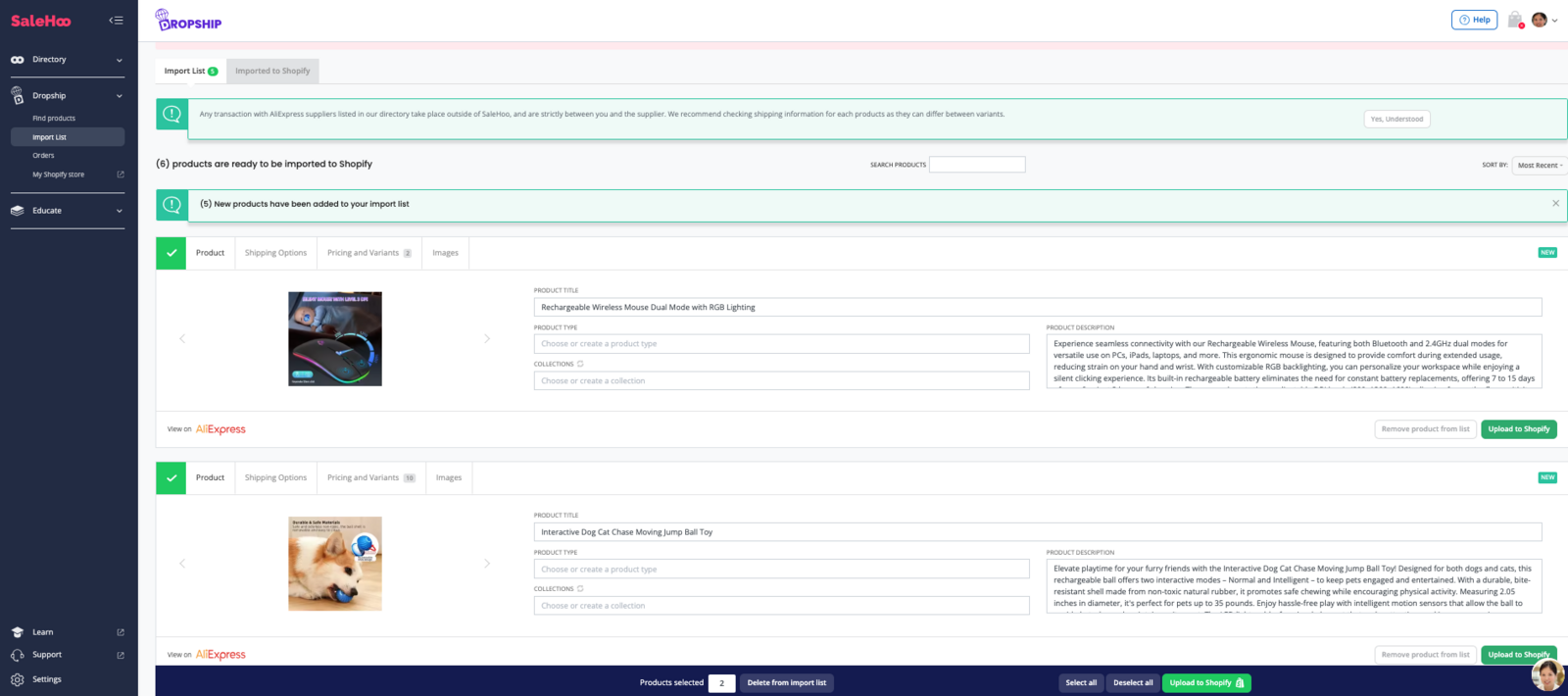
Short answer: yes, but only if you’re using Shopify. It’s clean, relatively easy to use, and comes with a product import system and basic automation for the management of orders. All this simplicity, though, comes with tight boundaries.
The platform doesn’t support eBay, Amazon, Walmart, or even Facebook Marketplace, which leaves a massive chunk of sellers out. Even with Shopify, SaleHoo’s automation features are extremely limited compared to modern dropshipping tools.
For new sellers focused solely on smaller Shopify stores, it might be enough. For anyone else who is focused on growth, managing multiple stores with automation, and looking to get more hands-off, Easync is a much more solid option.
Final Take: Does SaleHoo Still Make Sense for Today’s Seller?
SaleHoo built its reputation back when dropshipping online was still the Wild West. For its time, the platform made supplier discovery easier and helped thousands of sellers find their feet. Even today, its clean dashboard, pre-vetted directory, and educational tools are still useful for beginners.
However, the game has changed. Sellers now expect real-time tools, multi-channel support, and automation that keeps pace with their growth. Manual uploads and single-platform limitations just don’t cut it anymore.
That’s why more sellers are turning to modern platforms like Easync, which offer scalable foundations with built-in automation, smart listing tools, and direct integration with all major marketplaces.
If you’re still relying on systems built for 2005, you’ll likely miss what 2025 demands. The tools have evolved, and the smartest sellers are evolving right alongside them.
Is Your SaleHoo Subscription Up for Renewal?
If you’re thinking about moving on, now is the perfect time to try Easync. There’s no lock-in contract, and setup is simple. Just sign up, connect your store, and use the bulk import tool to get started.
The 7-day free trial gives you plenty of room to test it before making the switch.
Noah Edis is a freelance writer and systems engineer with a wealth of experience in modern hardware and software. When he’s not working on his latest project, you can find him playing competitive dodgeball or pursuing his personal interest in programming. At Easync, Noah helps thousands of sellers optimize their eBay and Amazon businesses by providing automation tools and practical guidance on account health, pricing, and inventory management.
